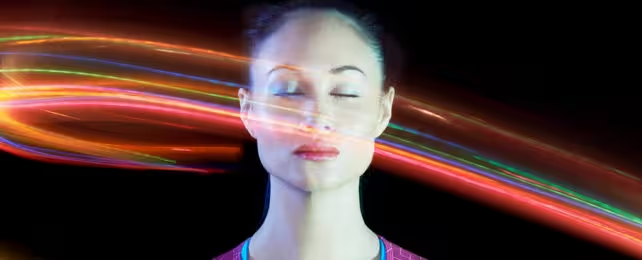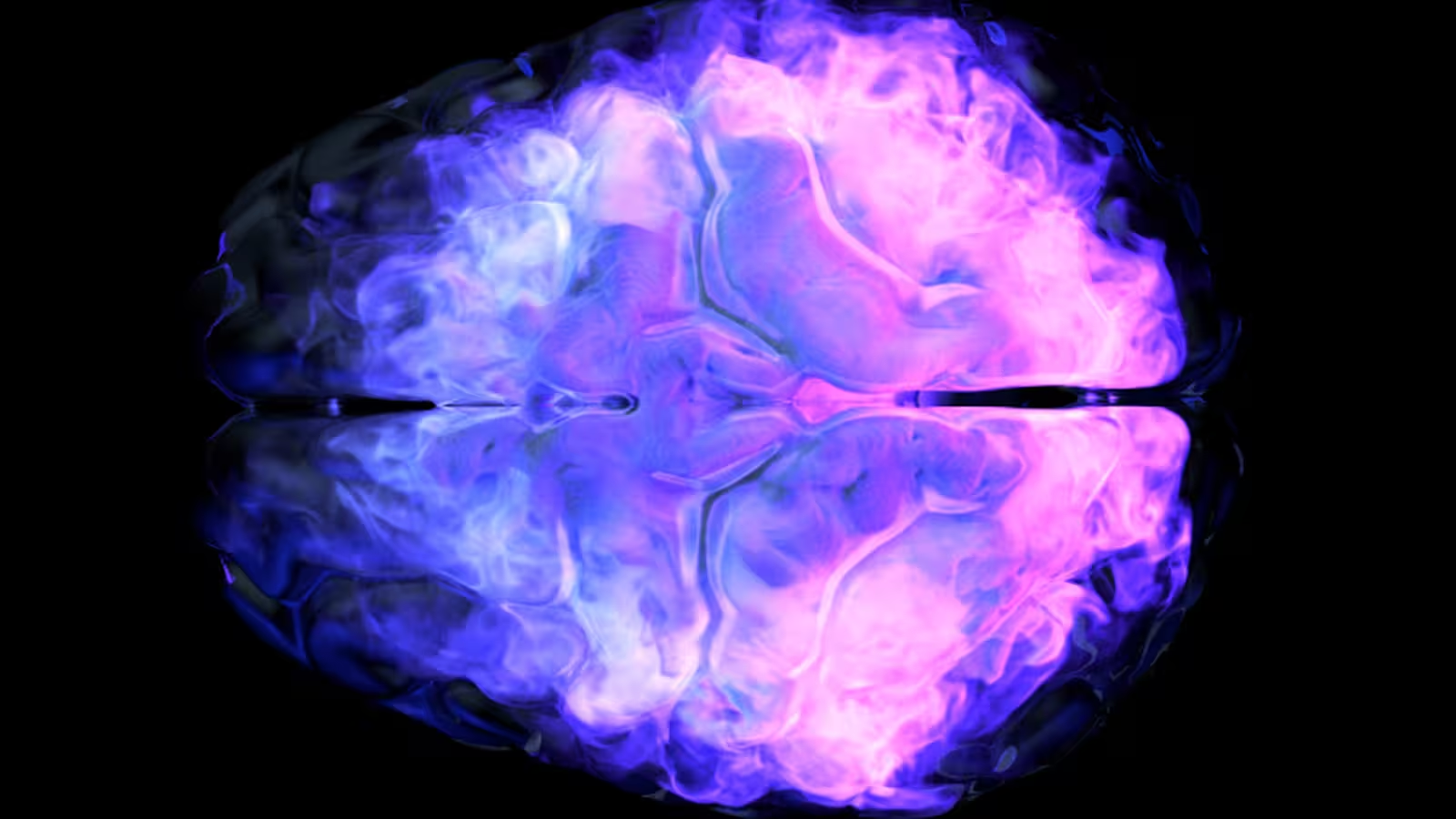6 Minutes
Introduction: Exploring the Convergence of Psychedelics and Near-Death Phenomena
Why do individuals recount traveling toward a brilliant light, encountering otherworldly beings, or witnessing a panoramic review of their lives during near-death experiences (NDEs)? Increasingly, scientists are exploring whether these remarkable narratives might share common ground with the effects of dimethyltryptamine (DMT), a powerful psychedelic compound. Recent research is helping to untangle the threads connecting DMT-induced visions and near-death phenomena, offering insights into human consciousness and the brain’s final frontiers.
Scientific Context: What Is DMT and What Happens During NDEs?
Dimethyltryptamine (DMT) is a naturally occurring psychedelic substance found in various plants and produced in small amounts within some mammals. In many countries, including the UK, DMT is classified as a controlled substance due to its intense psychoactive effects. Users often inhale vaporized DMT, quickly entering vivid, immersive states often described as mystical or otherworldly.
Near-death experiences, on the other hand, are spontaneous events reported by people who come extremely close to death—such as during cardiac arrest—yet survive. These experiences commonly feature out-of-body sensations, moving through tunnels, intense emotions, and profound spiritual revelations. Despite centuries of anecdotal reports, the brain mechanisms behind NDEs remain partially unexplained, fueling both scientific inquiry and popular fascination.

Groundbreaking Qualitative Study: Comparing DMT States and NDEs
A recent field study was the first to systematically compare real-world accounts of DMT experiences with near-death episodes induced by cardiac arrest. Thirty-six adult participants consumed high-dose vaporized DMT in familiar settings, like their own homes, as opposed to the artificial context of a laboratory. Researchers employed micro-phenomenology, an advanced interview technique that invites participants to recollect their experiences in detailed, chronological fashion—describing sensory perceptions, emotions, and moment-to-moment changes with exceptional granularity.
The team cataloged recurring themes in DMT experiences: dissolution of bodily awareness, encounters with intelligent beings, journeys through tunnels or expansive voids, and immersion in radiant light. These data were then meticulously compared with raw reports from 34 documented cardiac arrest NDEs, allowing the scientists to probe both parallels and distinctions between the two classes of altered states.
Key Findings: Overlaps and Crucial Contrasts
The comparison revealed striking commonalities. Both groups often described sensations of leaving the body, entering mysterious spatial realms, and engaging with non-human presences. Such patterns suggest underlying similarities in how the brain processes sensory inputs, spatial orientation, and self-perception during extraordinary circumstances—be it psychedelic intoxication or the approach of death.
Yet, there were also critical differences. The classic “life review”—where individuals relive significant moments or face moral judgments—was almost never present in DMT experiences but was frequent among NDE participants. Conversely, complex geometric patterns, a hallmark of DMT visions, rarely appeared in near-death narratives. Notably, while those undergoing NDEs often encountered deceased relatives or familiar figures, DMT users routinely met abstract entities or alien-like beings.
The structure of these journeys also diverged: NDEs frequently involved the sensation of floating above one’s body and being greeted by benevolent guides, whereas DMT travelers reported a rapid dissolution of physical boundaries followed by immersion in bizarre, transcendent landscapes inhabited by surreal, sometimes mechanical beings.
Expert Insights: Brain Biology and Psychological Influences
Researchers contend that the shared elements in both experiences likely stem from universal features of brain biology—particularly disruptions in the neural networks governing body awareness, perspective, and perception during extreme physiological states. The narrative content, however—such as meeting ancestors versus fantastical entities—is shaped by a person’s psychological background, cultural expectations, and personal memories. This blend of biology and psychology creates unique, yet sometimes overlapping, altered states of consciousness.
Some elements of NDEs remain scientifically perplexing. For instance, the so-called “Peak in Darien” phenomenon, where individuals claim to see the recently deceased whom they could not have known had died, has yet to be fully accounted for by current neuroscience.
The Neuroscience of DMT: Production, Enzymes, and Neurochemistry
Decades ago, pioneering scientists proposed that endogenous DMT could be released in large quantities in the human brain at the brink of death, potentially triggering NDEs. Recent animal studies show rats generate DMT not only in their pineal glands—a brain region often associated with mystical experiences—but also throughout cortical tissues at the time of death. However, definitive evidence for similar processes in humans is lacking. Even if such DMT surges do occur, enzymes in the human body might break down the molecule rapidly, possibly preventing it from reaching psychoactive concentrations in the brain.
Another neurotransmitter, serotonin, is released in massive amounts during extreme stress—such as cardiac arrest—and may itself trigger psychedelic-like effects. Serotonin also binds more readily to certain brain receptors than DMT, sometimes suppressing DMT’s actions. These intricate neurochemical dynamics complicate the direct linking of DMT to all aspects of NDEs, prompting calls for more rigorous experimental data and deeper understanding of brain activity during near-death states.
Intriguing Variants: Abstract and Cosmic NDEs
Interestingly, the study uncovered a subset of NDEs that diverged from the typical narrative. Instead of seeing familiar people or earthly locales, these individuals experienced abstract, cosmic visions reminiscent of high-dose DMT journeys. Researchers speculate such cases may occur when a person has fewer preconceived ideas about NDEs or stronger expectations about psychedelic experiences. Alternatively, uncharacteristically high levels of naturally occurring DMT in the brain during critical moments might support such visions.
Cultural Context and Therapeutic Potential: DMT, Ayahuasca, and Beyond
For countless generations, Indigenous communities in the Amazon basin have used ayahuasca, a plant-based brew containing DMT, to access spiritual realms and seek healing or ancestral guidance. This traditional practice highlights the enduring intersection of biology, culture, and altered states of consciousness.
Modern neuroscience is now investigating DMT’s potential therapeutic applications. People who have experienced NDEs frequently report a lasting release from the fear of death—a psychological shift that could benefit those experiencing existential anxiety or terminal illnesses. Because DMT induces many elements of the near-death scenario, it may offer psychotherapeutic benefits (with professional psychological and medical support) to those seeking relief from profound distress or prolonged grief. Early clinical research is underway to assess ayahuasca’s role in treating bereavement-related disorders and other conditions linked to psychological suffering.
Conclusion
Scientific exploration into DMT and near-death experiences is shedding new light on the boundaries of consciousness, the brain’s capacity for dramatic transformation, and the profound psychological effects of altered states. While many features of DMT trips and NDEs overlap, their differences are equally revealing—illuminating the roles of neurobiology, culture, and individual psychology in shaping how we encounter extreme or boundary-defying phenomena. As research advances, these insights may foster both improved scientific understanding and transformative mental health therapies, ensuring that what was once viewed as mystical or mysterious becomes progressively more accessible through the lens of modern science.
Source: theconversation



Comments